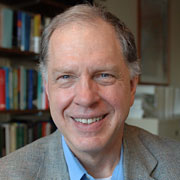Underground heat: an omnipresent source of electricity
A new MIT-led study concluded that a major future energy source is in the ground beneath us—not coal or natural gas or oil but heat trapped in underground rocks virtually everywhere.
Aided by technology from the oil and gas industry, that subsurface stored thermal energy can be captured, brought to the surface, and used to power electricity-generating equipment.
The comprehensive study of geothermal energy concluded that “heat mining” could begin to replace aging coal and nuclear plants within 15 years and by mid-century could meet a significant fraction of U.S. electricity demand—all from a domestic resource and at an acceptable cost.
Geothermal energy was the focus of much research in the 1970s and early 1980s. But when oil prices declined in the mid-1980s, interest waned. “Now that energy concerns have resurfaced, it’s time to revisit the geothermal option,” said Professor Jefferson W. Tester, MIT’s H. P. Meissner Professor of Chemical Engineering, who led the 18-member panel of energy experts, geologists, drilling specialists, and others.
And thirty years later, the geothermal option looks distinctly different, thanks in large part to improved methods of drilling and of characterizing oil and gas reservoirs to expand the fraction of those resources that can be recovered.
Some areas—for example, in Iceland, Indonesia, and the western United States—are naturally suited to geothermal production of electricity. There, water flows through cracks in subsurface hot rocks and comes to the surface as hot water and steam ideal for generating electricity. But in most areas the hot rock is deeper, less permeable, and/or devoid of water. Enhanced geothermal system (EGS) technology is a means of making those regions of hot, dry rock behave like the natural geothermal systems found in, say, Iceland.
EGS technology calls for drilling a well down to the hot rock and then injecting water forcefully enough to open up tiny fractures in the rock and extend them horizontally away from the well. A series of injection and production wells are then drilled into the region of fractured rock. Water sent down the injection wells sweeps through the hot fractured rock and back up the production wells, providing large quantities of hot water or steam to run electric generators at the surface.
Benefits of heat mining
The wide-ranging geothermal assessment identified many benefits of so-called heat mining. Unlike fossil-fuel power plants, an operating geothermal plant will require no additional fuel. It will give off no carbon dioxide, and—unlike solar and wind systems—it will run day and night, providing uninterrupted power.
EGS-based power plants can be built wherever demand calls for them, cutting the cost and electricity losses incurred in moving power long distances. Building a plant will involve far lower environment impacts than building a coal or natural gas plant does. And the plant’s “footprint” will be small: energy capture and extraction occurs underground, and the surface equipment needed for conversion to electricity is relatively compact.
The technology is not without its concerns. For example, providing water for a geothermal plant may be an issue in some locations, and the potential for seismic risk needs to be carefully monitored and managed. However, the basic EGS technology works. It is already being used at a number of locations where underground heat is near the surface.
What is the cost and timing of being able to use heat mining at a much larger scale? According to the assessment, methods to mine heat at far greater depths could be developed within the next 15 years. During that time, the necessary R&D and deployment of early plants would require a combined public and private investment totaling about $800 million—less than the cost of a single new-generation clean-coal power plant. By 2050 geothermal systems could produce more than 100,000 megawatts of electricity—a tenth of the country’s current generating capacity.
What are the next steps? Among other recommendations, the expert panel calls for more detailed assessments of the U.S. geothermal resource at specific sites and a multi-year federal commitment to demonstrate the concept in the field at commercial scale.
—Nancy Stauffer
This research was sponsored by the U.S. Department of Energy. The full report is available at http://geothermal.inel.gov/


